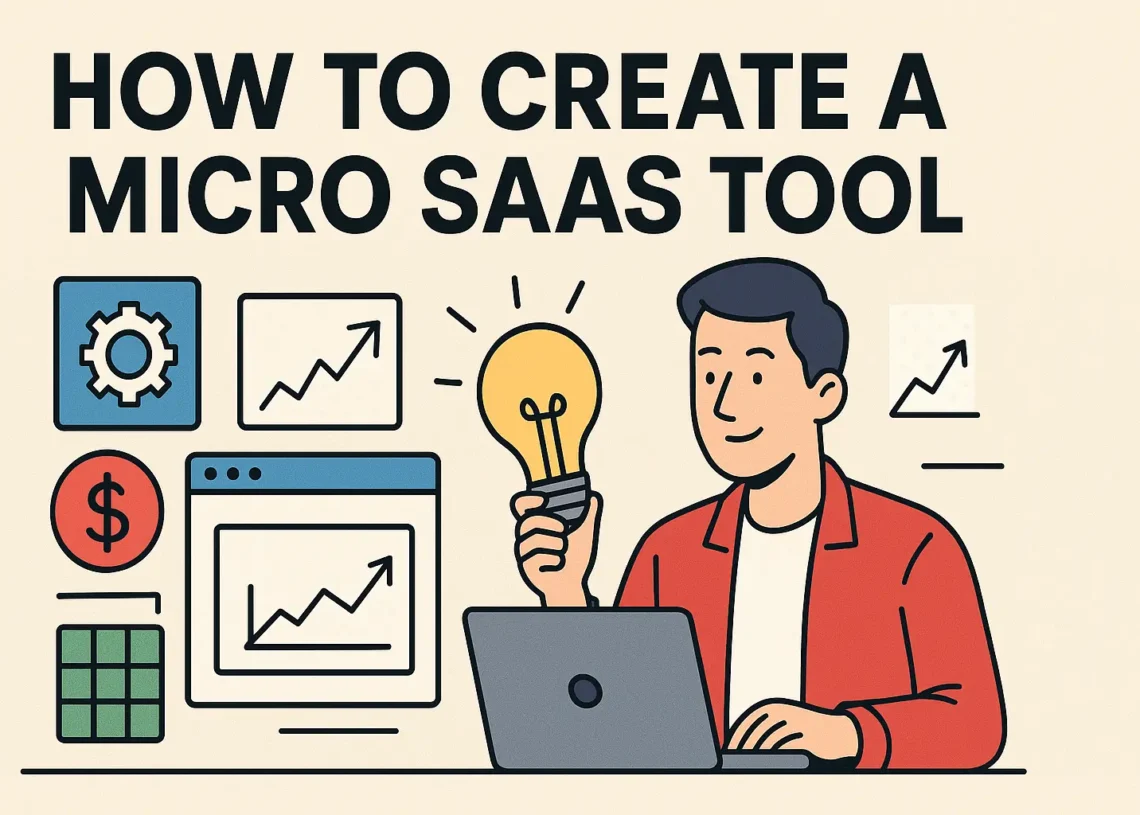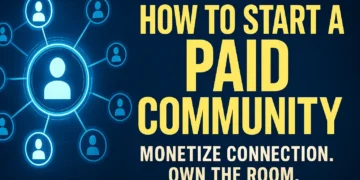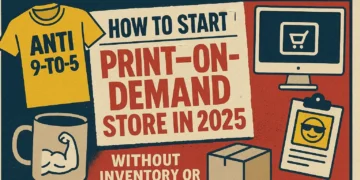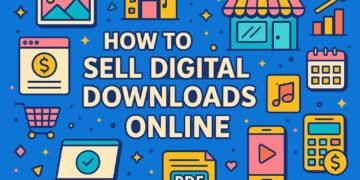Let’s kill the myth right away: You don’t need to be a Silicon Valley engineer to learn how to create a Micro SaaS tool that prints cash.
A Micro SaaS is a small, hyper-focused software product designed to solve a specific problem for a specific audience. Unlike big SaaS platforms, these tools are lightweight, easy to build, and often run by solo founders or small teams.
Think of it as the difference between building Amazon… or building a tool that helps Airbnb hosts track guest reviews. One takes millions. The other takes a weekend.
The SaaS industry isn’t slowing down—in fact, it’s getting more accessible. In 2023, the global SaaS market was worth $197 billion, and it’s expected to hit $299 billion by 2025 (Salesmate).
But here’s the twist: You don’t need to build a unicorn. You just need to solve one small problem better than anyone else.
Micro SaaS products fly under the radar. They tap into underserved niches. They often make $1K to $10K/month with minimal overhead. Platforms like Indie Hackers and Starter Story are filled with solo creators stacking monthly recurring revenue from these kinds of projects (Starter Story).
If you’ve ever felt like the SaaS world was locked behind code and cash, you’re about to crack the gate wide open.
Let’s break down how to create a Micro SaaS step by step.
🎧 Prefer Audio?
Here’s a quick walkthrough of this guide to create a Micro SaaS Tool in 2025
Note: This is a short overview. For the full breakdown, keep scrolling or read the full post below.
What Makes Micro SaaS a Great Business Model for Beginners?

Let’s keep it simple: You don’t need funding, a cofounder, or a decade of coding experience to get started.
Here’s why Micro SaaS is perfect for beginners:
💸 Low Startup Costs
Forget $50K builds. With tools like Bubble, Glide, and Softr, you can launch a real product for the cost of a Netflix subscription. According to Design with Value, many Micro SaaS apps are built in under 24 hours.
🔁 Recurring Revenue
This is what makes Micro SaaS so powerful. You charge $9–$49 per month, and your revenue stacks. Investopedia points out that recurring models offer predictable income, long-term customer retention, and stronger lifetime value.
🔥 High Margins
With no office, no dev team, and no shipping costs, your profit margins are wild—often 70% to 90%+. That means if you’re making $3,000/month, most of it stays in your pocket (LinkedIn).
🧠 Total Flexibility
You’re the boss. Set your schedule. Work from anywhere. Adjust pricing, features, and positioning without getting boardroom approval. Prospecting Toolkit notes how this independence lets solopreneurs move faster and respond directly to customer needs.
📈 Built to Scale (If You Want To)
Start small. Nail the product. Grow the user base. You don’t need to go viral—you just need traction in a focused niche. That’s where repeat customers, referrals, and upsells come from.
📌 Bonus Read: If you’re still exploring ideas, check out 25 Digital Business Models You Can Start in 2025 — it’s a curated list to spark your next move.
You won’t need to pitch investors, hire a team, or chase unicorn status.
You’ll just need to ship, charge monthly, and iterate.
Can You Really Build a SaaS Without Knowing How to Code?
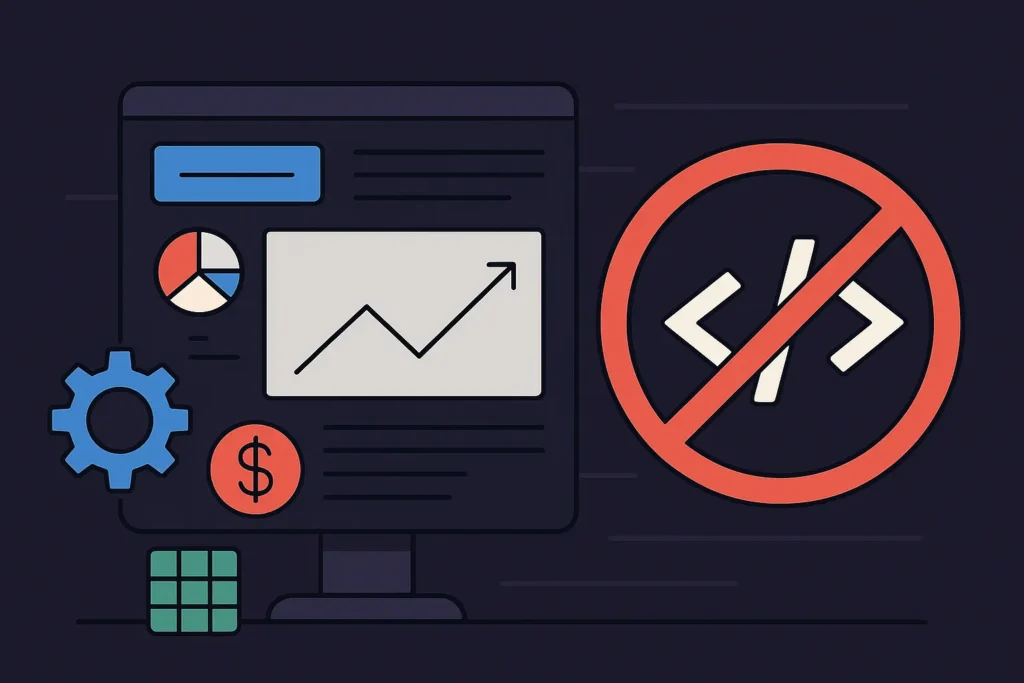
Absolutely. Coding is no longer the barrier it used to be. The no-code revolution has changed the game.
Platforms like Bubble, Glide, and Softr have leveled the playing field. These tools let you build full SaaS applications with logic, databases, workflows, user accounts, and payments—without touching a line of code.
Let’s talk real proof:
Carrd, a solo-built no-code website builder, crossed over $1 million in ARR, all from one person who just kept shipping (Medium).
Dividend Finance started their MVP using Bubble, scaled it fast, and grew into a major player in clean energy finance (Upstack Studio).
Other small Micro SaaS products like Famewall (testimonial tool), Clickpilot (YouTube thumbnail optimizer), and GrowthPanels (reward system for SaaS) are each pulling in between $1K–$2K/month using no-code stacks.
No-code isn’t just about speed—it’s about leverage. You can test faster, pivot quicker, and own your stack without being dependent on developers.
So yes, you can build a real SaaS business without code.
The only thing you need? A problem worth solving.
How Do You Find a Profitable SaaS Idea That People Will Pay For?
Here’s the truth: You don’t need a genius-level idea. You need a painful problem.
The best Micro SaaS products come from problems people complain about, not dreams you brainstorm in a vacuum.
Start with pain point mining:
- Scroll through Reddit threads like r/Entrepreneur, r/SaaS, or niche subs.
- Lurk in Facebook groups or Discord communities.
- Use X (formerly Twitter) to find people venting about their workflow frustrations.
Look for phrases like:
- “Is there a tool for this?”
- “I hate doing X manually.”
- “Anyone else struggling with…”
That’s your goldmine.
A great Micro SaaS idea solves one of three things:
- Saves time
- Makes money
- Reduces stress
Let’s look at what worked for others:
| SaaS Tool | What It Solves | MRR (Est.) |
|---|---|---|
| Famewall | Automates testimonial collection for creators | $1,000/month |
| Clickpilot | Thumbnail feedback tool for YouTubers | $1,600/month |
| GrowthPanels | Rewards users for engaging with SaaS products | $2,000/month |
Don’t try to reinvent the wheel. Just make it spin smoother.
As for B2B vs B2C? Go B2B if you want stability. Businesses have recurring pain. They budget for solutions. They don’t ghost after two weeks like a flaky consumer might.
Your winning idea is out there. It’s not in your head—it’s in their complaints.
How Do You Validate Your Idea Before Building Anything?
Time needed: 42 days
Validating your idea isn’t optional—it’s mandatory. Your goal isn’t to build a product. It’s to prove that someone will pay for it.
Here’s the step-by-step:
- Create a Simple Landing Page
Use tools like Carrd or Tally to build a one-pager. Include a bold headline, a short value proposition, and a call-to-action asking visitors to join a waitlist or sign up for updates. This lets you gauge interest and collect emails from potential users.
- Record a Product Demo (Without the Product)
Use Loom or CleanShot to record a 2–3 minute video walking through what the tool would do. Narrate a simple use case while showing a visual mockup. People engage better with visuals than just text.
- Design Clickable Mockups
Fire up Figma and design a clickable prototype. No coding needed. Walk people through it live on Zoom or send it to early users on social media. If they ask, “When does this launch?”—you’re on the right path.
- Pre-Sell It
Test your strongest form of validation: get people to pay before you build. Offer lifetime deals or early-bird pricing. According to Indie Hackers, some founders hit $500–$2,000 in sales before writing a single line of code.
- Build Demand First
If people sign up, engage, and pay, you’ve got green lights across the board. Start building with confidence. If not? You saved weeks of wasted work.
According to some cases, some founders hit $500–$2,000 in revenue before they write a single line of code, just by validating smart.
Build demand before the product. That’s the move.
What Tools and Stack Should You Use to Build Your SaaS MVP?
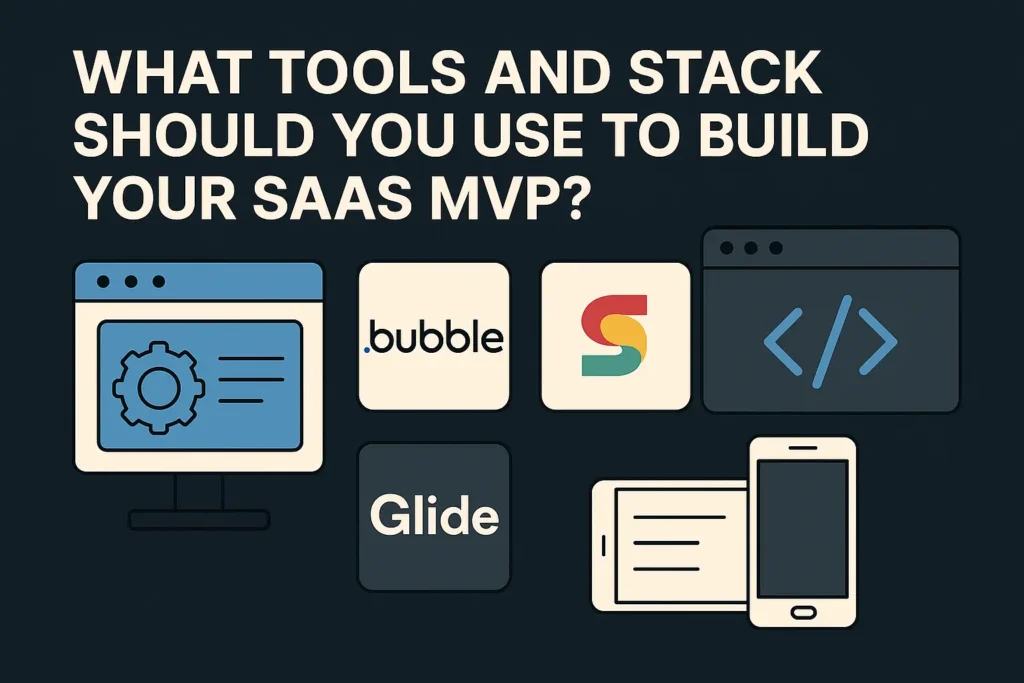
Let’s get practical.
You don’t need to reinvent the tech stack. You need a stack that’s fast, flexible, and fits your use case.
Here’s a cheat sheet:
🧰 For Simple Tools (Dashboards, Trackers)
Perfect for internal tools, CRM dashboards, or personal productivity apps.
⚙️ For Custom Workflows (Logic, Multi-User, Complex UI)
- All-in-One: Bubble (handles front + back)
- Payments: Stripe or Outseta
- User Management + Auth: Built-in with Bubble or Outseta
Use this if your app needs logic, conditions, multiple user roles, or complex actions.
🔒 For Gated Content + Memberships
- Softr + Airtable for content + client portals
- Combine with Stripe for paid access
💳 Payment Stack
- Stripe: Standard for SaaS payments (subscriptions, one-time, tiered)
- Outseta: Handles everything—auth, CRM, payments, email—in one box
According to Upstack Studio, using tools like Bubble and Outseta helped startups cut build time in half and get to market within weeks.
Pro Tip: Don’t overthink it. Choose a stack that lets you launch in <30 days.
Because shipping is the only feature that counts.
How Do You Launch Your SaaS and Get Your First Paying Customers?
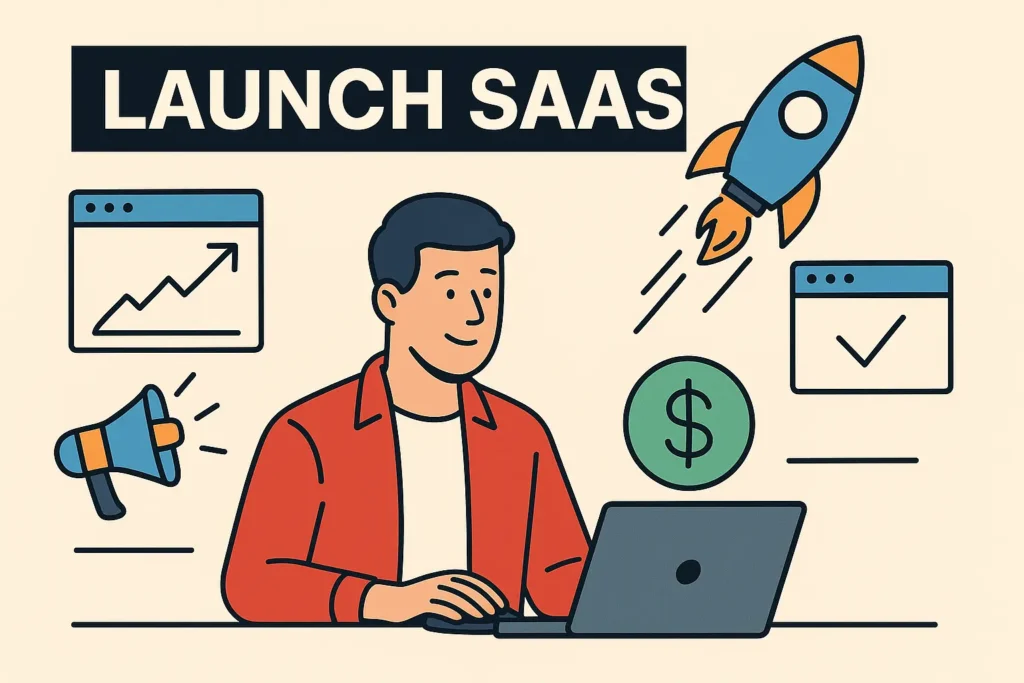
You’ve validated it. Built it. Now what?
You don’t wait. You launch.
Here’s how to get that first batch of users (and turn some into paying customers):
🚀 Launch on Product Hunt
Product Hunt gives you instant exposure to early adopters. If your SaaS has a clear benefit, clean branding, and a solid demo video, it can drive thousands of clicks on day one. Make sure you’ve got your value prop dialed in.
🧠 Post on Indie Hackers
This is where builders hang out. Share your journey, ask for feedback, and show your progress. It’s not just marketing—it’s relationship building.
📢 Build in Public on X (Twitter)
Founders who share their process (even messy screenshots) gain followers who convert into users. Show what you’re building, ask questions, and engage with your niche.
🔗 Use LinkedIn for B2B Products
Your network—and their network—is full of potential customers. Share your launch story, pain points, and quick wins. Add a call to action and a product link.
📬 Do Cold Outreach the Smart Way
Don’t spam. Instead, message people who have publicly talked about your problem space. Personalize it. Mention their tweet, post, or product.
“Hey, saw you mentioned XYZ. I built a simple tool that might save you time. Want a free beta invite?”
🧲 Start an Email List
Add a simple form to your site. Offer something useful (free templates, guides, access). Email your list weekly with updates and micro-launches. This keeps you top of mind.
Remember, your goal isn’t to “go viral.”
Your goal is to get 10 people who care.
From there? Feedback → testimonials → traction.
What’s the Best Way to Price Your Micro SaaS Product?
This part trips up a lot of founders. Don’t overcomplicate it.
You’re not trying to be everything to everyone. You’re trying to match price with perceived value.
Here are your options:
💳 Flat Monthly Pricing
This is the go-to for most Micro SaaS. Simple, clear, and repeatable. Popular tiers? $9, $19, or $49/month. Price sensitivity is highest under $50—above that, expectations spike.
🧱 Tiered Pricing
Offer 2–3 plans. The basic plan includes core features. The pro plan gets integrations, automation, or more seats. Add an “unlimited” tier for teams or power users.
🆓 Freemium (With Caution)
Offer a free plan only if your product has viral mechanics or a low marginal cost. Otherwise, free users eat up support time and never convert. A free trial (7 or 14 days) usually performs better.
🛍️ Lifetime Deals
Good for early traction. You get upfront cash; users get locked-in access. Use platforms like AppSumo or your own checkout.
🧠 Price Anchoring
Use high-tier pricing to make mid-tier feel like a bargain. If your top plan is $99/month, your $29 plan feels safe, even if that’s what you wanted people to pick all along.
🔄 Listen and Adjust
Pricing isn’t permanent. Talk to users. Test different offers. Use tools like Stripe or Outseta to adjust plans fast.
Your goal is to make the price feel like a no-brainer compared to the pain you’re solving.
How Do You Keep Users, Reduce Churn, and Grow MRR?
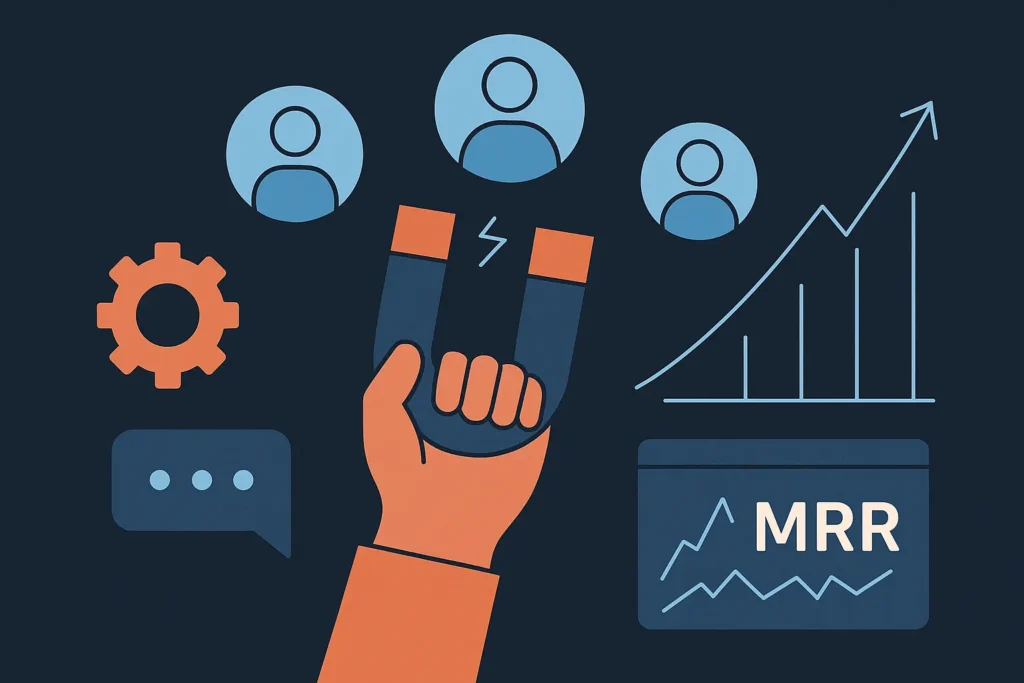
Getting users is great. Keeping them is what builds wealth.
Here’s how you make sure customers stick, stay happy, and tell their friends:
📞 Offer Rockstar Support
Fast, human replies build trust. Use tools like Crisp, HelpScout, or just a personal email to respond quickly. If you’re small, act like it’s a feature, not a flaw.
📣 Build a Feedback Loop
Use Tally, Typeform, or just email to ask: “What do you love? What’s missing?” Feature requests can become upgrade opportunities. Public roadmap tools like Canny or Trello boards show users you’re listening.
📦 Ship Small Improvements
Don’t wait for version 2.0. Ship small. Ship often. Even a tweak to the dashboard or a tooltip can feel like progress. People churn when tools go stale.
🏘️ Build a Mini Community
Create a private Slack, Circle group, or Discord server for power users. They’ll do half your support and evangelism for free. According to Forrester, SaaS businesses with strong user communities see higher retention and upsell rates.
📊 Monitor Your Metrics
Track churn rate, average revenue per user (ARPU), and customer lifetime value (LTV). Tools like Baremetrics or Outseta show you what’s healthy and what’s leaking.
🔥 Bonus: Add Upsells
Once you’ve nailed retention, consider small add-ons: templates, analytics upgrades, or API access. These drive revenue without needing new users.
Remember: it costs 5x more to acquire a new user than to keep an existing one. Keep them happy, and they’ll pay you for years.
Real Case Studies: Micro SaaS Founders Who Did It Without Code
Let’s talk real-world proof. These aren’t theories—they’re live, profitable businesses built with no code.
🧪 Carrd – $1M ARR, Solo Founder
A simple one-page website builder created by AJ, a solo developer. He used no-code principles to build fast, sell early, and iterate relentlessly. Now it’s used by millions and generates over $1 million in annual recurring revenue.
🚀 Famewall – $1K/month MRR
Created by a solo founder to help brands collect and display testimonials. Built with no-code tools like Softr and Airtable. It hit its first $1K in monthly recurring revenue in under 60 days.
📈 Clickpilot – $1.6K/month MRR
This tool helps YouTubers test and optimize thumbnails. No fancy backend—just Glide, Google Sheets, and automation. Its creator found a growing niche and shipped fast.
🎁 GrowthPanels – $2K/month MRR
Used by SaaS founders to incentivize user behavior. The founder validated fast, pre-sold early access, and built using Bubble and Outseta.
What do they all have in common?
- They solved one painful problem.
- They used no-code to move fast.
- They kept it simple and shipped early.
If they did it, so can you.
What Mistakes Should You Avoid When Building a Micro SaaS Tool?
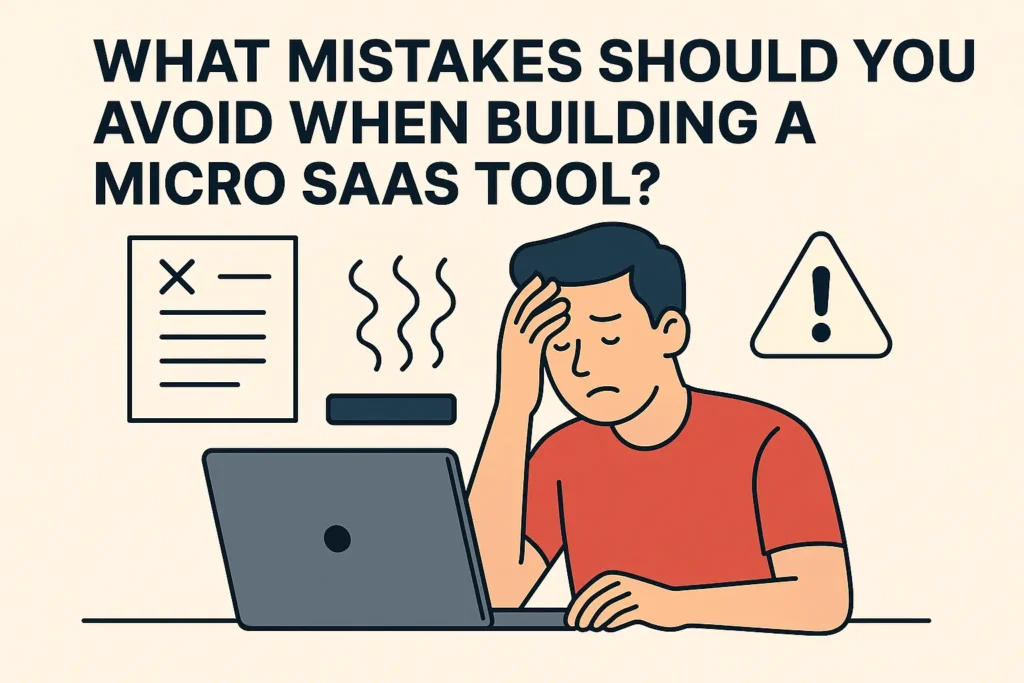
Even a good idea can flop if you take the wrong turn early.
Let’s save you the pain. Here are the landmines to avoid:
🛠️ Overbuilding
The #1 killer. Don’t wait to add every feature under the sun. Launch with the core value. MVP = minimum viable product, not maximum version polish.
🎨 Obsessing Over Design Too Early
Yes, UI matters. But if your product doesn’t solve anything, no one cares how slick it looks. Prioritize function first, beauty second.
👻 Building in Isolation
You need feedback. Early. Often. Waiting until launch to talk to users is like writing a novel without letting anyone read chapter 1.
🎯 Targeting Too Broad
“Anyone can use this” = no one uses it. Be niche. Serve one group with one painful problem. Expand later.
📉 Ignoring Churn and Retention
If people cancel after a month, your product isn’t sticky. Fix that before scaling. Don’t throw new users into a leaky bucket.
📊 Not Tracking Metrics
If you can’t measure it, you can’t improve it. Use basic analytics to track signups, active users, revenue, and churn.
Every mistake above is fixable. But you save time (and cash) when you avoid them early.
Why This Is the Most Underrated Business You Can Start Today
This isn’t just a side hustle—it’s the smartest way to print recurring income without burning cash or begging for funding.
Micro SaaS is pure leverage. Build once, sell forever. You don’t need to quit your job, move to San Francisco, or raise a seed round. You need curiosity, a little grit, and a bias for action.
Most people dream of launching the next big app. You? You’re launching something better—a small app that pays you every month.
Your first tool might earn $300/month. Then $1,200. Then $4K. One project becomes a portfolio. A safety net. A system that buys back your time.
You’re not building an empire overnight. You’re stacking bricks.
You’re learning fast, launching faster, and owning your outcomes.
So start now. Not next month. Not after your course. Not when you “feel ready.”
Pick a pain point. Sketch a solution. Build the MVP.
Then get it out there.
This is your permission to ship.
Because the only thing between you and your first SaaS paycheck… is action.
❓ FAQ
A Micro SaaS is a small-scale software-as-a-service business that targets a specific niche market. Typically run by solo founders or small teams, these businesses focus on solving a particular problem with minimal resources and overhead.
No, coding is not a prerequisite. With the rise of no-code and low-code platforms like Bubble, Glide, and Softr, you can build and launch a functional Micro SaaS product without writing a single line of code.
Start by identifying specific problems or inefficiencies in industries you’re familiar with. Engage in communities like Reddit, Indie Hackers, or niche forums to discover pain points that lack adequate solutions.
Create a simple landing page outlining your product’s value proposition and collect email sign-ups. Share this page within relevant communities to gauge interest. Pre-selling or offering early access can also test demand before full development.
Initial costs are relatively low. Utilizing no-code tools can keep expenses under $100 per month. Your primary investments will be in domain registration, platform subscriptions, and minimal marketing efforts.
Leverage platforms where your target audience congregates. Share your journey and product updates on Twitter, LinkedIn, and relevant forums. Building in public can attract early adopters and generate valuable feedback.
Start with a simple monthly subscription model, offering tiered pricing based on features or usage levels. This approach provides predictable revenue and allows customers to choose a plan that fits their needs.
Implement a comprehensive FAQ section and use support tools like HelpScout or Crisp to manage inquiries efficiently. As your user base grows, consider outsourcing support or using chatbots to handle common questions.
